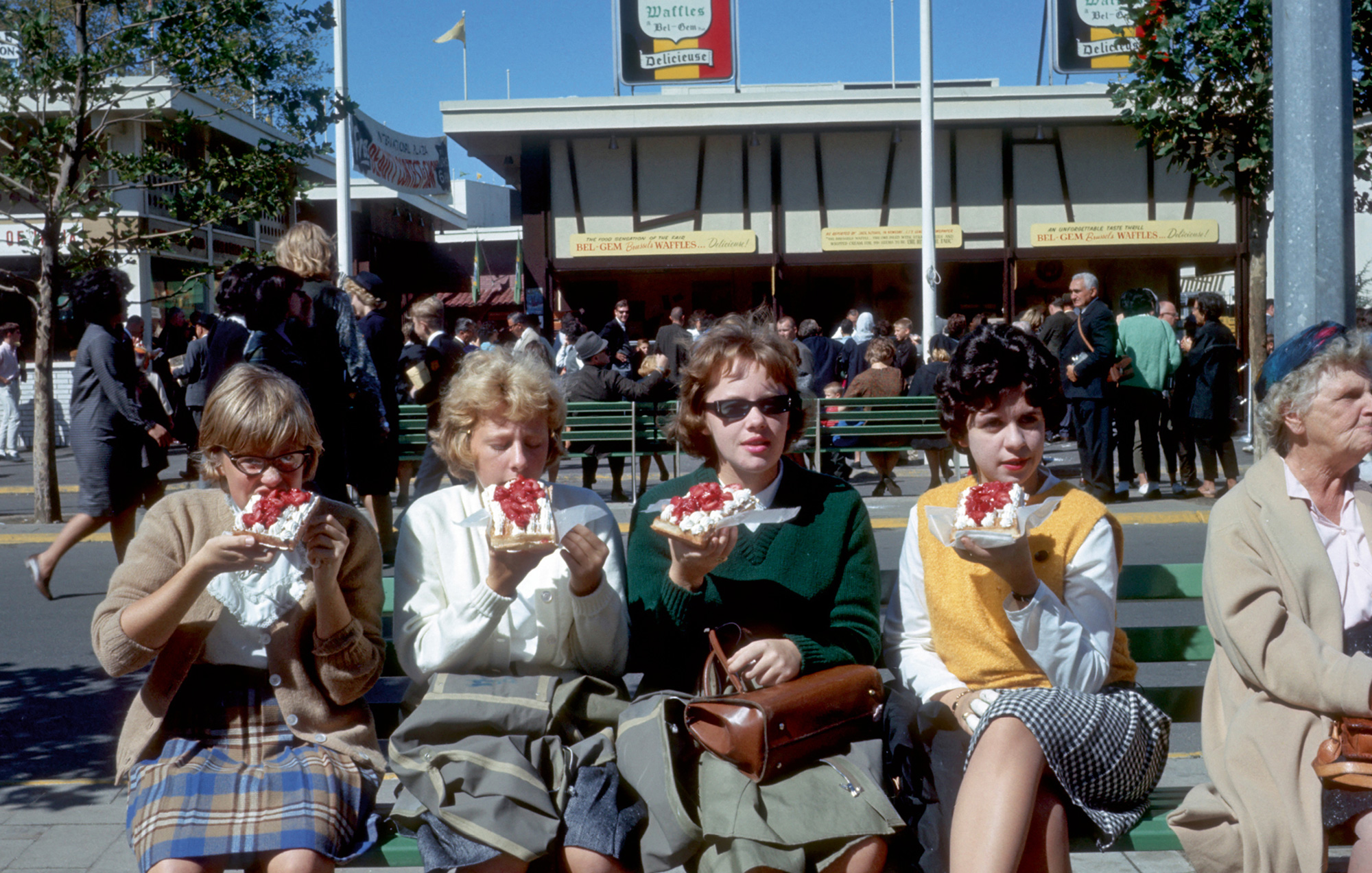Sacrament to Street Food
The troubled history of the waffle
Aden Kumler

The 1964–1965 World’s Fair in New York is generally credited with having induced the first major “waffle craze” in the United States. Operating out of the fair’s simulacral “Belgian Village,” Maurice and Rose Vermersch, emigrés from Brussels, together with their daughter, MariePaule, were astonished by the enthusiastic response to their “Bel-Gem Waffles.” Rose Vermersch had the idea of loading the waffles with whipped cream and strawberries (a deviation from Belgian custom) as an appeal to the American sweet tooth.[1] Her instinct was right: the waffles “were one of the undisputed hits of the Fair.”[2] Taboo for carbohydrate-vilifying diets today, the World’s Fair waffles of 1964 offered a sweet, if inauthentic, taste of the Old World amid the celebrations of modernity on display in Flushing Meadows.
The waffle was not always such an innocent pleasure. From an historical point of view, the Vermersch family’s Bel-Gem Waffles were a triumph of rehabilitation, effectively rebranding an old culinary phenomenon with a troubled history as a novel, sweet treat for postwar America.[3]
Although wafers and waffle-like cakes were enjoyed in ancient Greece and Rome, the real heyday of the pastry begins in the Middle Ages. Already in the eighth century, monks in Europe consumed several kinds of wafers: light, fragile nebulae (also called neules, nieules); the apparently more robust échaudés (cooked first in water and then baked and served warm, as the name suggests); and the delicate oblata or oublies/oublees that shared a name and a recipe with the communion wafers employed in the Catholic Mass.
Like the Western communion wafer, oublies were made from a thin batter of wheat and water cooked between the flat surfaces of a long-handled ironwork press set over a fire. Unlike the communion wafer, which was smooth on one side and impressed with raised motifs on its other, oublies were cooked in presses that produced reliefs upon both surfaces of the pastry.
Nebulae and oblata were served on special occasions in medieval monasteries, primarily certain Sundays and during the season of Lent. Some sources describe the thin wafer cakes as a light collation consumed with wine on special occasions, often at dinner the night before major religious holidays. Both nebulae and oblata were distributed as pittances (a benefaction in the form of food or drink, often to commemorate a death) to the monastic community. Oublies also served as a customary payment that vassals made to their lords at set points over the course of the year throughout medieval Europe. Over time, this droit d’oubliage (as it was called in France) was replaced by more pragmatic forms of tribute: measures of wheat flour and, eventually, money.